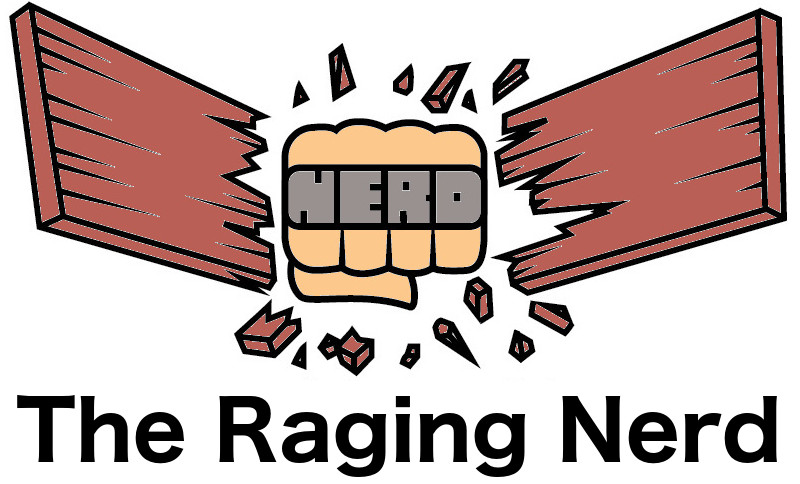Saint Patrick’s Day in TV and Movies: A Pop Culture Celebration
Every March 17th, the world is awash in green, shamrocks, and Guinness as people celebrate Saint Patrick’s Day. While the holiday itself has roots in Irish history and the life of Saint Patrick, its modern pop culture presence is undeniable—especially in television and film. From sitcoms and animated classics to wild party movies, Saint Patrick’s Day has been used as a backdrop for hilarious (and sometimes chaotic) storytelling.
Sitcom Shenanigans: The Saint Patrick’s Day Episode
Sitcoms love a good holiday episode, and Saint Patrick’s Day is no exception. It provides the perfect setting for mischief, mistaken identities, and a whole lot of green beer.
How I Met Your Mother took the holiday to a new level with its episode No Tomorrow, in which Barney Stinson (Neil Patrick Harris) embraces the idea that anything goes on Saint Patrick’s Day. His reckless behavior leads to one of the show’s long-running mysteries: the identity of the Mother. The episode captures the party-hard mentality often associated with the day, but also sneaks in a lesson about responsibility.
The Office (U.S.) also delivered a memorable Saint Patrick’s Day episode, in which Michael Scott tries (and fails) to impress his new boss Jo Bennett. Meanwhile, Jim and Pam struggle with the realities of being new parents. The contrast between office antics and real-life responsibilities makes for a classic workplace comedy moment.
Animated Hijinks and Irish Stereotypes
Animated shows have had their fair share of Saint Patrick’s Day episodes, often playing with (or outright mocking) common Irish stereotypes.
In The Simpsons, the episode Homer vs. the Eighteenth Amendment is a wild ride inspired by Prohibition-era history, but it kicks off with Springfield’s rowdy Saint Patrick’s Day parade. Bart accidentally gets drunk, leading to a full-blown alcohol ban in the town. The episode uses the holiday as a catalyst for a larger story about rebellion and government overreach—classic Simpsons satire.
Meanwhile, Family Guy leans into absurdity with Peter’s Two Dads, which features Peter Griffin’s realization that his real father is Irish. The exaggerated Irish stereotypes in the episode—such as constant drinking and chaotic pub fights—are played for laughs, but also reflect how American media has often depicted Ireland in a humorous (if not entirely accurate) light.
Saint Patrick’s Day on the Big Screen
Movies have embraced Saint Patrick’s Day as a setting for wild parties, heartfelt reunions, and even crime capers.
One of the most famous Saint Patrick’s Day scenes comes from The Fugitive (1993), in which Dr. Richard Kimble (Harrison Ford) evades U.S. Marshals by blending into a massive Chicago parade. The scene wasn’t staged—the filmmakers actually shot during the real Saint Patrick’s Day parade, making for a thrilling and authentic escape sequence.
On the comedy side, The Boondock Saints (1999) is a cult favorite that leans into Irish Catholic themes, crime, and vigilante justice. While not strictly about Saint Patrick’s Day, the film’s strong Irish identity and pub-centered moments make it a go-to watch for the holiday.
For those who love full-blown party movies, Leprechaun (1993) is an over-the-top horror-comedy starring Warwick Davis as an evil leprechaun hunting down his stolen gold. It’s campy, ridiculous, and has become a bizarre yet beloved part of Saint Patrick’s Day movie marathons.
Dressing the Part: The Rise of Funny St Patrick’s Day Shirts
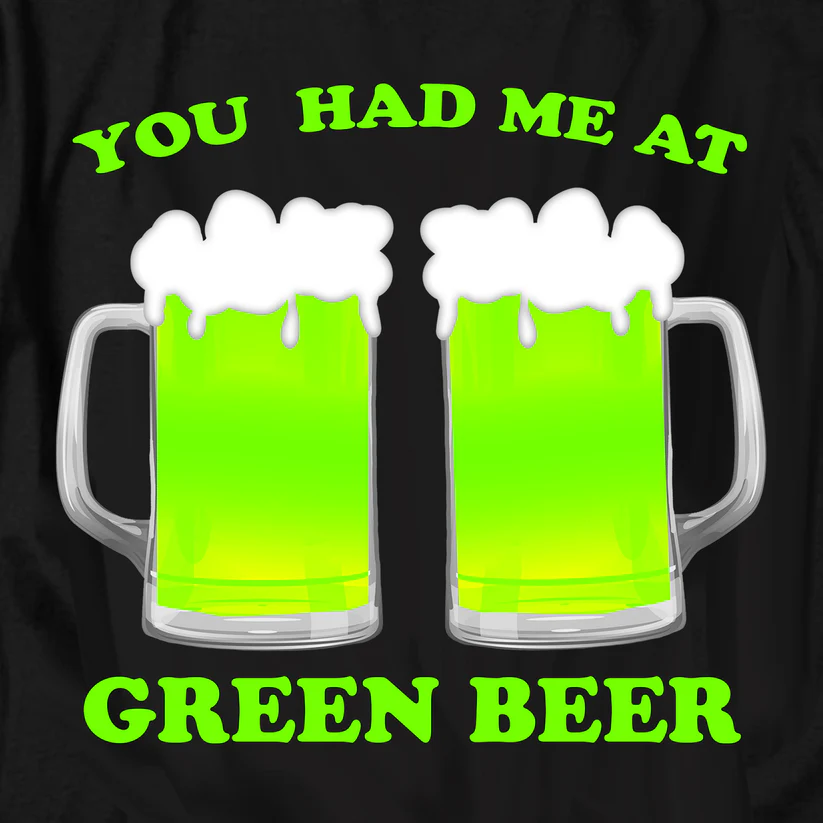 Of course, no Saint Patrick’s Day celebration is complete without festive attire. From leprechaun hats to green tutus, people love to dress up for the occasion. But one trend that has taken over in recent years is the rise of funny St Patrick’s Day shirts.
Of course, no Saint Patrick’s Day celebration is complete without festive attire. From leprechaun hats to green tutus, people love to dress up for the occasion. But one trend that has taken over in recent years is the rise of funny St Patrick’s Day shirts.
Pop culture references, sarcastic slogans, and pun-filled designs are everywhere. Some of the most popular include shirts with phrases like “Kiss Me, I’m Irish (Or Drunk, Or Both)” and “Let’s Get Shamrocked.” Others play on classic TV and movie moments—think It’s Always Sunny in Philadelphia-inspired designs featuring Paddy’s Pub or quotes from famous Irish-themed episodes.
A Holiday Worth Watching
Whether you’re binge-watching sitcoms, revisiting classic movies, or just enjoying a few pints while wearing a ridiculous t-shirt, Saint Patrick’s Day has become a pop culture staple. The holiday’s representation in TV and film reflects both its fun-loving nature and its sometimes over-the-top stereotypes.
So this March 17th, grab a Guinness, throw on your funniest Saint Patrick’s Day shirt, and enjoy the holiday—whether that means hitting the town, watching The Simpsons, or simply reveling in the luck of the Irish from your couch.
In Retrospect, DC’s The Flash Was Actually a Pretty Good Show
 It’s easy to take The Flash for granted. The CW’s superhero universe (Arrowverse, as fans affectionately dubbed it) was once a powerhouse, churning out interconnected storylines, massive crossover events, and a steady supply of comic book action on a TV budget. But in the golden age of peak television, when cinematic-level production values became the norm, The Flash often felt like the underdog.
It’s easy to take The Flash for granted. The CW’s superhero universe (Arrowverse, as fans affectionately dubbed it) was once a powerhouse, churning out interconnected storylines, massive crossover events, and a steady supply of comic book action on a TV budget. But in the golden age of peak television, when cinematic-level production values became the norm, The Flash often felt like the underdog.
Yet, looking back now, it’s clear that The Flash was actually a pretty good show—sometimes even great.
The Heart of the Show
At its core, The Flash was always about heart. While Arrow leaned into darkness and brooding, The Flash embraced optimism, humor, and the sheer joy of super-speed. Grant Gustin’s Barry Allen wasn’t just a hero—he was a friend, a mentor, a husband, and, most importantly, a guy who genuinely loved being The Flash.
Gustin was the perfect lead. Unlike Ezra Miller’s take in the DCEU, which leaned more into awkward comic relief, Gustin’s Barry was endearingly nerdy but also deeply human. His relationships—whether with his surrogate father Joe West (the ever-charismatic Jesse L. Martin) or his eventual wife Iris West (Candice Patton)—gave the show its emotional core.
And let’s not forget Tom Cavanagh, who played multiple versions of Harrison Wells with an almost absurd level of range. Whether he was the sinister Reverse-Flash or the goofy yet brilliant Sherloque Wells, Cavanagh kept audiences entertained with each new iteration.
The Villain Problem—And Its Bright Spots
Like many long-running shows, The Flash struggled with repetitive storytelling, particularly when it came to villains. The “evil speedster of the season” formula got old fast, with Zoom, Savitar, and Godspeed all blurring together (pun intended). The non-speedster villains, however, often shined brighter.
Eobard Thawne/Reverse-Flash (also played by Cavanagh and Matt Letscher) was easily one of the best villains in the entire Arrowverse. His personal vendetta against Barry made him compelling, and every time he showed up, you knew things were about to get serious. Then there was Gorilla Grodd—one of the most ambitious CGI villains on network television—and Captain Cold (Wentworth Miller), whose campy, calculated performance made him an instant fan favorite.
The Highs and Lows
No show runs for nine seasons without some missteps, and The Flash had its share. The later seasons, especially after Crisis on Infinite Earths, struggled to recapture the magic of the earlier years. The storylines got convoluted, some supporting characters were sidelined or written out, and budget constraints led to some questionable CGI moments.
But when The Flash was good, it was really good. The Flashpoint adaptation, while different from the comics, was one of the show’s most ambitious swings. The early seasons nailed the balance between procedural and serialized storytelling, making each episode feel like a fun comic book adventure.
And then there were the crossovers—Crisis on Earth-X, Elseworlds, and Crisis on Infinite Earths—which showcased just how much love The CW had for DC’s history. Seeing Gustin’s Barry interact with John Wesley Shipp’s ‘90s Flash and even Ezra Miller’s DCEU version was a dream come true for fans.
The Lasting Legacy
Despite its flaws, The Flash will be remembered as a defining superhero show of its era. While Marvel dominated the big screen, DC found a home on TV, crafting an interconnected universe that, for a time, was more consistent than the DCEU.
The show also had an undeniable cultural footprint. Remember the explosion of The Flash merch in the mid-2010s? If you walked into any pop culture store, you’d find The Flash hoodies, hats, and, of course, tv show t shirts. It became a staple of geek fashion, right alongside Batman, Superman, and The Walking Dead.
And let’s not forget how many future superhero projects it influenced. Without the Arrowverse, it’s unlikely we’d have gotten Superman & Lois or even Peacemaker, both of which carry on the legacy of fun, serialized superhero storytelling.
So, in retrospect, The Flash wasn’t just “another CW show.” It was a genuinely solid superhero series that, for a while, gave fans the best live-action Flash we’d ever seen.
And for that, we should be grateful.
What Is The Best Party Game?
Everybody has their own opinions about what constitutes a good party game or what games are best for parties and family gatherings. I think that if you’re just at a default party, with no especial theme or demographic, then the best board game for parties is Trivial Pursuit. There are a few things that make Trivial Pursuit stand out. Of course, everyone has their own specific tastes, but here’s why I think that Trivial Pursuit is the best. You can disagree with me if you want, but after reading this, you can not possibly deny that Trivial Pursuit is a fantastic party game. You might even like it enough to wear a Trivial Pursuit t-shirt!
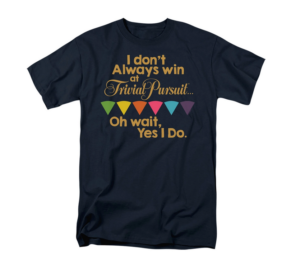 First of all, Trivial Pursuit can be played using teams or single players. There are several colors that can be used, so that makes it possible to have up to six people, each with their own colors. If you’re willing to have teams, then you can have up to twelve people, with each color corresponding to a pair of persons. Or, if you only have six people, you can just have three teams of two.
First of all, Trivial Pursuit can be played using teams or single players. There are several colors that can be used, so that makes it possible to have up to six people, each with their own colors. If you’re willing to have teams, then you can have up to twelve people, with each color corresponding to a pair of persons. Or, if you only have six people, you can just have three teams of two.
Second of all, Trivial Pursuit is knowledge-based. It’s not about skill at playing a particular game, like Splendor or Settlers of Catan or Carrcassonne. It’s also not about speed or how fast you can grab a piece or react to a bell ringing. Instead, Trivial Pursuit is about knowledge. You have to know the answers to the questions. And more importantly, there are enough different areas of knowledge to keep any single player from dominating the game. Even the egghead in your family will probably not excel at the sports section!
Third, Trivial Pursuit is very replayable. Unlike system-based strategy board games, such as Secret Hitler or Arkham Horror, Trivial Pursuit cannot really be “gamed”. You simply know the facts or you don’t. And since the game comes with so many cards, it’s always replayable.
Was Twisted Sister A Metal Band?
Twisted Sister is primarily known as a hair band, or hair-metal. It’s not true metal, but a kind of pop rock that was popular during the 1980s. However, they did have a few songs that were closer to true metal. While Twisted Sister primarily wrote songs that were poppy and anthemic, similar to Poison or Motley Crue, they did write a few songs that were less teased hair and leotards and more leather and spikes, more in the vein of Iron Maiden or Judas Priest than Whitesnake of Bon Jovi. So what songs were those, and what made them sound like metal?
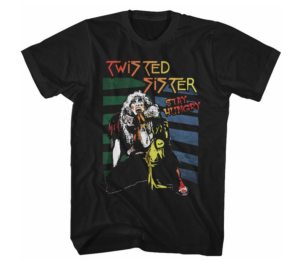 The first of their more metal tracks is Burn In Hell. The very title already sounds like a legitimate metal song rather than a hair metal bonanza, and that’s what they delivered on this track. Covered later on by no less a legendary black metal band than Dimmu Borgir, Burn In Hell begins with slow, ominous minor-key power chord riffing. The singer stays away from the higher end of his range and sings in a rough baritone: “Welcome to the abandoned lands/Come on in child, take my hand”. It’s the sort of singing that frequently accompanies heavier tracks in 80s metal. When he finally unleashes a high-pitched scream, the track kicks into overdrive, with the tempo increasing and the intensity ramping up. The chorus, a simple refrain of “You’re gonna burn in hell” serves to drive home the grim nature of the track. Interestingly, when viewed closely, the lyrics are not about Satan and death and evil at all. Rather, they’re a warning for the listener to change their ways before they “burn in hell”. Whether this is a reference to a literal Christian afterlife punishment, or a simple warning about the consequences of one’s actions, is anybody’s guess.
The first of their more metal tracks is Burn In Hell. The very title already sounds like a legitimate metal song rather than a hair metal bonanza, and that’s what they delivered on this track. Covered later on by no less a legendary black metal band than Dimmu Borgir, Burn In Hell begins with slow, ominous minor-key power chord riffing. The singer stays away from the higher end of his range and sings in a rough baritone: “Welcome to the abandoned lands/Come on in child, take my hand”. It’s the sort of singing that frequently accompanies heavier tracks in 80s metal. When he finally unleashes a high-pitched scream, the track kicks into overdrive, with the tempo increasing and the intensity ramping up. The chorus, a simple refrain of “You’re gonna burn in hell” serves to drive home the grim nature of the track. Interestingly, when viewed closely, the lyrics are not about Satan and death and evil at all. Rather, they’re a warning for the listener to change their ways before they “burn in hell”. Whether this is a reference to a literal Christian afterlife punishment, or a simple warning about the consequences of one’s actions, is anybody’s guess.
The second heavy track from Twisted Sister, which is the reason why so many metalheads still occasionally wear Twisted Sister t shirts, is Under The Blade. Under The Blade begins with fast palm mutes in a manner reminiscent of Judas Priest. The singer begins menacingly, saying, “A glint of steel, a flash of light/You know you’re not going home tonight”. At the end of the first verse, when he finally screams the word “Blade!” near the upper end of his range, the guitars go from fast low palm mutes to being ripped open by power chords higher on the fretboard. This is the sort of thing that Rob Halford would have had fun with. Amusingly, this song was highlighted by Tipper Gore as a reason to censor music and put parental advisory stickers on CDs, because she assumed that it was about lascivious, deviant practices. This is very funny, because Tipper Gore seems to have been projecting: in reality, Under The Blade is just about getting oral surgery, which is a very frightening experience, as anyone who has had their wisdom teeth out knows full well. Although it’s good that we all now know what Tipper Gore was doing on the weekends, if you get my drift.
What Does The Fallout Series Do For Us?
The Fallout games are a huge cash cow for Bethesda. For example, Fallout: New Vegas raked in more than three hundred million dollars in the first month after its release. Pause for a moment to reflect on what a tremendous sum of money that is. There are blockbuster films that never touch anywhere near that amount of money. How is it that this series has made Bethesda so much cash? What is it about Fallout that is so compelling that people just have to have it? Granted, it’s not the Elder Scrolls or the fame of Skyrim, but there’s definitely something there that people want. So what is it? What’s with all the Fallout video game shirts?
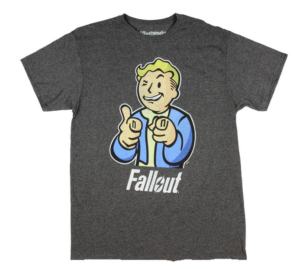 There are a few things. First of all, the post-apocalyptic genre is relatively underplayed. Yeah, there have been a few movies like Mad Max that had post-apocalyptic settings, but overall, it’s not a hugely popular genre. There are way more high fantasy and sci-fi/space opera settings than post-apocalyptic. Since it’s such an underused genre, Fallout comes across as a very original game by using a post-apocalyptic setting. Moreover, you would expect post-apocalyptic games to be either action or survival horror. Fallout, however, is decidedly a role playing game, which is unexpected and thus a fresh combination.
There are a few things. First of all, the post-apocalyptic genre is relatively underplayed. Yeah, there have been a few movies like Mad Max that had post-apocalyptic settings, but overall, it’s not a hugely popular genre. There are way more high fantasy and sci-fi/space opera settings than post-apocalyptic. Since it’s such an underused genre, Fallout comes across as a very original game by using a post-apocalyptic setting. Moreover, you would expect post-apocalyptic games to be either action or survival horror. Fallout, however, is decidedly a role playing game, which is unexpected and thus a fresh combination.
Secondly, it provides Bethesda with a series that is somewhat less cartoonish than their other games. Skyrim is an enormously popular game, but the voice acting, writing, and plot are all on the same level as you’d see in a Disney film, or perhaps slightly below that. The Fallout games just feel somehow more serious. Part of it is the superior quality of the voice acting and dialogue, as well as the writing. But another big part of it is the setting. While fantasy can be done well, it’s something that must be “sold” in order to be convincing. If we are going to take magical dragons seriously, then we have to be persuaded to do so. Post-apocalyptic settings are just easier to take seriously and lend themselves more to suspension of disbelief.
Another big issue with Fallout is the consistency of the series, which is an element that is missing from the Elder Scrolls. The Elder Scrolls was never a very consistent series. There was Arena, which was more of a beta or prototype than a series-launching game. Then we had Daggerfall, which is the first game that felt a bit like the Elder Scrolls but was still more of a historical achievement than a game that people still want to play today. The first really great ES was Morrowind, which was very different from Daggerfall. Oblivion felt like a more canned Morrowind with slightly better graphics, and Skyrim was just a straight-up action game.
Fallout, by contrast, is a very consistent series. That’s not to say that all the games are, or even feel, the same. However, they’re all clearly in the same genre and proceed along the same general lines. This is in stark contrast to the Elder Scrolls, which feel like a weird experiment with each new game. Fallout, by contrast, is a series where the gamer knows roughly what they’re going to get.
What is Mega Man’s story?
Mega Man is a very recognizable video game character featured on many video game shirts. A lot of people know who he is even if they’ve never played any of the games. Released in the late 1980s, the first Mega Man game was revolutionary because it allowed the player to choose what order to defeat the bosses in. Each boss gave the player a new weapon to use, which would be very effective against at least one other boss. For example, an ice-themed boss might give you a weapon that works well against the fire boss. Choosing which boss to beat and in what order made the original game stand out.
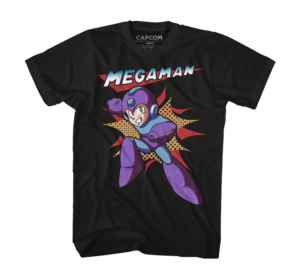 But what was the story of Mega Man? In the original game, the robot (originally known as Rock Man) was a robot created by a scientist named Dr. Light. Dr. Light had a colleague named Dr. Wiley who helped created robots. When Dr. Wiley went rogue and reprogrammed Dr. Light’s robots, one of the only ones who escaped was Rock Man, who offered to be converted into a combat robot to stop Dr. Wiley. This was a simple enough story, and Dr. Wily was the boss of the original game. He was one of those old style video game bosses that is beaten in several stages.
But what was the story of Mega Man? In the original game, the robot (originally known as Rock Man) was a robot created by a scientist named Dr. Light. Dr. Light had a colleague named Dr. Wiley who helped created robots. When Dr. Wiley went rogue and reprogrammed Dr. Light’s robots, one of the only ones who escaped was Rock Man, who offered to be converted into a combat robot to stop Dr. Wiley. This was a simple enough story, and Dr. Wily was the boss of the original game. He was one of those old style video game bosses that is beaten in several stages.
This was a short lived part of the whole mythos, though. A few years later, in 1993, the character who would come to truly define the series was created. The character’s name was X, although he is commonly also called Mega Man. X is a successor to the original Mega Man that was created and placed in suspended animation for a century before being recovered by Dr. Cain. He was originally created by Dr. Light, but Dr. Cain was the scientist who found him a century later. Ignoring Dr. Light’s warnings that were logged in the time capsule, Dr. Cain proceeded to replicate Mega Man and create many more robots like him, called Reploids.
The Reploids (replica androids) were different from their predecessors. Like Mega Man X, they had free will and could make their own decisions. Disaster struck when a certain group of them became known as “mavericks”, turning against their human masters with their newfound free will. A group of maverick hunters was created, consisting of loyal reploids who could hunt down and kill the mavericks. One such maverick hunter was called Sigma. Sigma was originally a maverick hunter, but he eventually became a maverick himself and becomes the main villain of Mega Man X. Another character is introduced, named Zero, who is like the opposite of Sigma: originally a creation of Dr. Wily, he joins the maverick hunters later on.
The plot becomes more complicated from there, of course, but the brass tacks of it have been laid out. The plot as a whole is very confusing for a newcomer to the series, so if you don’t want to sound like a fool in front of die-hard fans, this article should help you out.
Video Game Review: Streets Of Rage
If you were a gamer of any stripe during the early 90s, you knew all about Streets of Rage. One of the most famous examples of the beat ‘em up genre, Streets of Rage allows you to pick from one of three characters: Adam, Axel, and Blaze. The characters are all very similar and possess the same movesets. What differentiates them are the character sprites, which look very different, and their stats. Adam has high power and jumps high, but is slower. Axel has high power and is fast, but does not jump very high. Blaze, the female, has high speed and jumps well, but has lower power. The game can be played with one or two players.
 While the characters do not have unique styles or super moves (this comes later in the series), they do have something resembling a super move. If the special button is pressed, the camera will shift backward to reveal a police car. The police car will pull up and a policeman will pop out of it with either a bazooka or gatling gun. The policeman fires the weapon. Then the camera shifts back to the battlefield, where fire will rain down and destroy or greatly damage all enemies on screen. Each level, the player begins with one “special” use to call the police officers.
While the characters do not have unique styles or super moves (this comes later in the series), they do have something resembling a super move. If the special button is pressed, the camera will shift backward to reveal a police car. The police car will pull up and a policeman will pop out of it with either a bazooka or gatling gun. The policeman fires the weapon. Then the camera shifts back to the battlefield, where fire will rain down and destroy or greatly damage all enemies on screen. Each level, the player begins with one “special” use to call the police officers.
This is a very strange mechanic, but not totally unheard of in beat ‘em up games. For example, in Spider Man & Venom: Separation Anxiety, both the players can call superheroes from the Marvel Comics Universe to come attack all opponents onscreen. So the use of “summons” or “calls” during beat ‘em up games does have a history outside of Streets Of Rage. Later installments in this franchise would delete the “call” move in favor of special moves unique to each characters, and even give multiple specials to different characters. However, the call mechanic, as discussed earlier, would go on to crop up in other side scrolling beat ‘em ups later on in the 90s.
The game is fairly short and ends when the players defeat a gun-wielding mob boss named Mr. X. Mr. X is the antagonist of all three of the original Streets of Rage games. He wields a tommy gun and is portrayed as the boss of the criminal syndicate that sends out all of the goons that the players encounter.
Streets Of Rage is not the best beat ‘em up game from the 90s, but its two sequels were some of the greatest beat ‘em up games ever made. Streets Of Rage is therefore very important historically because it marks the beginning of the one of the most successful (and playable!) beat ‘em up franchises. Check it out for its historical importance and not-too-shabby gameplay, but keep in mind that Streets of Rage 2 and Streets of Rage 3 are the real crown jewels of this franchise, and the ones whose cover art frequently appear on video game t shirts.
Bruce Lee and Jeet Kune Do
Bruce Lee designed his famous Jeet Kune Do martial art as more a philosophy or set of guiding principles than an actual system. To understand what he was doing and why, you have to understand how he thought about martial arts and his philosophy more generally.
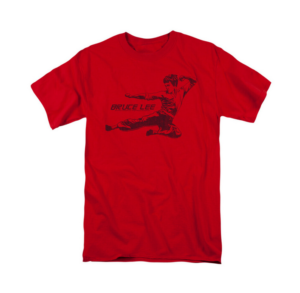 Bruce Lee thought that all thinking was ultimately a form of self-expression. Once you got rid of all the patterns, all of the frameworks, you were left with nothing but “yourself.” For example, if you begin by learning certain martial arts techniques, and then begin to modify them to make them easier to use, then you will eventually create something that is unique to you. If you follow the path of most efficiency long enough, then the martial arts you practice will eventually come to reflect your own specific, unique physical style. Thus, the best martial artist always practices a totally unique art.
Bruce Lee thought that all thinking was ultimately a form of self-expression. Once you got rid of all the patterns, all of the frameworks, you were left with nothing but “yourself.” For example, if you begin by learning certain martial arts techniques, and then begin to modify them to make them easier to use, then you will eventually create something that is unique to you. If you follow the path of most efficiency long enough, then the martial arts you practice will eventually come to reflect your own specific, unique physical style. Thus, the best martial artist always practices a totally unique art.
One of his favorite metaphors was that of water. Water, being a liquid, always takes on the shape of the vessel into which it is poured. If you pour water into a kettle, the water takes on the shape of the kettle. If you pour water into a vase, then the water takes on the shape of the vase. If you pour water into a glass, then the water takes on the shape of the glass. In every case, the water takes on the shape of the vessel into which it is poured. This metaphor applies both to the martial artist himself and to his art. The martial artist is like water in that he adapts seamlessly to each new situation by effortlessly fulfilling the new demands. In a real-life street defense situation, the martial artist would use improvised weapons or hide behind obstacles in a totally fluid and adaptable manner. Additionally, Jeet Kune Do itself adapts to the body of the martial artist, who makes the art his own by modifying techniques and improvising until he has developed his own personalized version of the martial art.
While it does not have techniques or patterns, however, Jeet Kune Do does have “guiding principles” that can be used to achieve better results. The highest kind of attack in Jeet Kune Do is known as a stop hit, or an attack that intercepts the opponent before they can land a blow. The idea is that, when an opponent goes to attack you, they will always give away or telegraph their attack, and this provides you an opportunity to intercept them. This same idea of interception is used both in the form of kung fu known as Wing Chun, and also in certain kinds of Western fencing.
The second highest kind of attack in Jeet Kune Do is to block an attack and counter at the same time. This technique is also used in the Israeli martial art, Krav Maga, where it is known as “bursting.” The very lowest kind of attack in Jeet Kune Do is to block or slip the opponent’s attack, and then counterattack in sequence. So Jeet Kune Do, which literally means “intercepting fist”, is based on the principle of having the upper hand at all times, by ranking attacks in a certain way.
Top Jim Carrey Movies
Who doesn’t love Jim Carrey? Well beloved for decades and one of the most famous and iconic actors of the past 50 years, Jim Carrey was the face of American comic cinema throughout the 90s and 2000s. A master of physical comedy and improvisation, Carrey didn’t just play roles; he was the lynch pin and central element of nearly every movie he starred in. Having been a fixture of American comedy for some time, it’s no surprise that you still see him on the occasional Ace Ventura movie t shirt. Here’s a list of some of his best films:
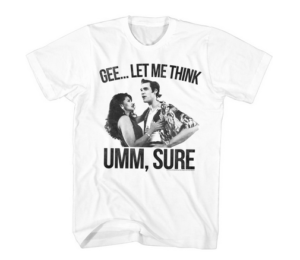 5 Ace Ventura
5 Ace Ventura
Ace Ventura was one of Carrey’s earlier films, and it shows. There is a general trend in his movies where they become less and less wacky and goofy and more introspective and thoughtful as time goes by. Belonging to his earlier period, Ace Ventura gives Carrey a lot of room to improvise and do silly impressions, and is overall typical of 90s comedy in its lightheartedness and farcical nature.
4 Dumb and Dumber
Much like Ace Ventura, Dumb And Dumber is a typical 90s comedy. We see Carrey taking up what came to be his prototypical role in the 90s: a happy go lucky dolt whose entire existence consists of misadventures. While Dumb And Dumber is not exactly a critic’s idea of a cinematic masterpiece, it’s still an endlessly entertaining movie decades later.
3 Liar Liar
One can see Liar Liar as the beginning of the trend where Jim Carrey movies stopped being pure silliness and began to trend toward thoughtfulness and high-concept film. Liar Liar is a movie about a little boy that makes a wish that, for one day, his dad can’t lie. This quickly becomes a problem, because dad is a lawyer and needs to lie constantly to keep his job. What follows is hilarious, but also a sad commentary on how dishonest people are every day. This comes home when Carrey’s character says the line: “Adults need to lie.”
2 The Grinch
The Grinch holds a special place on this list because it’s a remake of an animated favorite. Jim Carrey’s Grinch is just as cantankerous and curmudgeonly as the old cartoon Grinch. However, Carrey brings his own unique twist to the character. His unique brand of physical comedy brings a new dimension to an old favorite. Like Liar Liar, The Grinch also show’s Carrey’s trend toward more thoughtful film making and acting. The message of the original Grinch cartoon carries through in his newer, “inspirational” style.’
1 Bruce Almighty
Bruce Almighty was Jim Carrey’s highest-grossing film and might just have been his best. Released in 2003, it grossed $485 million. It is also the movie that takes place at the apex of Carrey’s high concept phase. In it, God, played by Morgan Freeman, offers Carrey’s character, Bruce, a chance to be God for a while. The film has some interesting ideas about religion and morality, and questions whether it would be a good thing if everybody ultimately just got whatever they wanted. Of all of his movies, this is perhaps the best one.
300: What Made It Work?
It has been a decade and a half since the release of 300. Released in 2006, the film was a blockbuster. Grossing over four hundred million dollars, the film was praised for its style, unique color palette, quotable dialogue, and over-the-top action and gore. Although the film was released fifteen years ago, people still quote it today and wear 300 t shirts. So I have to ask myself: what made 300 so good? Why is that movie a classic?
 A little background on me. I first saw this movie in 2006, when I was a teenager. I went to the theater in my small town with a friend and we sat in the back, ate some popcorn, and watched. I remember when, coming out of the theater, my friend was so pumped about it. He stood on the street corner and said, “Where do you guys wanna go eat? Because I was thinking that tonight, we could dine in hell!” He screamed that last part. I’m not the pubescent video-game-playing Red Bull-swilling kid I was then, but I vividly remember seeing 300 in the theater that night. It’s an experience I can’t forget.
A little background on me. I first saw this movie in 2006, when I was a teenager. I went to the theater in my small town with a friend and we sat in the back, ate some popcorn, and watched. I remember when, coming out of the theater, my friend was so pumped about it. He stood on the street corner and said, “Where do you guys wanna go eat? Because I was thinking that tonight, we could dine in hell!” He screamed that last part. I’m not the pubescent video-game-playing Red Bull-swilling kid I was then, but I vividly remember seeing 300 in the theater that night. It’s an experience I can’t forget.
And the unforgettableness of that movie really is what makes it a classic. But that, in turn, begs the question: what makes it unforgettable?
A few things. First, the movie is all about style more than substance. Or, to put a finer point on it, it’s style-as-substance. Who cares if it’s historically accurate or implausible? The point is the style. The whole movie is shot in a weird color scheme to make it look like a comic book, and this reinforces the surreal, mythological view of the whole thing. It doesn’t feel realistic. It doesn’t feel like real life at all. But it’s not supposed to! The whole point of 300 is to feel like some strange dream, the kind you have when you’ve got a high fever and just had a lot of cough syrup before bed. Everything in 300 is over the top and cartoonish, and that’s what makes it so delightfully archetypal.
The second aspect of 300 that makes it immortal (but not like a Persian Immortal!) is its quotability. Say any of the following to someone:
“Tonight, we dine in Hell!”
“Spartans, prepare for glory!”
“Madness? THIS IS SPARTA!”
Everyone knows those quotes. Everyone! Even people who have never seen the movie because they weren’t born when it came out know those quotes. They’re all over t shirts and memes and everything else. The quotable dialogue and unique style together make 300 an unforgettable film. Nobody can forget the over-the-top getup worn by Xerxes when he makes his first appearance, nor the sheer violence and gore. Add the agelessly quotable lines of dialogue ot that and you’ve got yourself a winner.
